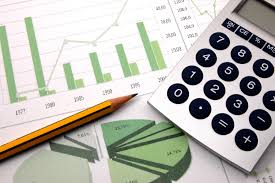Many people are losing money and wasting time by misunderstanding how a business makes money. Many small business owners actually do not understand the money cycle in their business and more importantly how and when cash is actually generated. This is one of the reasons that a business can get stuck in the hand to mouth stage for what seems to be eternity. One of the biggest problems that businesses face is knowing the difference between revenue and profit. As we work with more entrepreneurs it has become clear that there are times when people treat revenue as profit and vice versa. More so there is also a lot of overstatement of profit. Let’s take a simple example. Kariuki decides to enter the bicycle trade. He knows somebody who makes the bicycles in Thika. Kariuki wants to sell them in Nairobi. He initially orders one bicycle for the price of three thousand shillings with money he had saved up. He then sells it for five thousand shillings in Nairobi. He is happy with his work and convinced that his business will grow and be sustainable. He now has exactly five thousand shillings in his pocket. On the same day he goes home and discovers that his fridge has broken down. It will cost five thousand shillings to fix. He uses the same five thousand shillings in his pocket to fix his fridge. After all, he can’t let his food go bad. The next day despite his great ideas, he has no more money to buy another bicycle and keep his business going. He either has to give up or go and borrow another three thousand shillings.
One of the disciplines every business owner has to master is understanding that cash in hand does not necessarily translate to cash available to use. In various levels a lot business make the same fundamental mistake that Kariuki did. This is what Kariuki should have considered. Despite that fact that he had five thousand shillings in cash, the bike had actually cost him three thousand. The excess money that he had made from the transaction was only two thousand shillings. In order to keep his business running i.e. be able to buy another bicycle tomorrow, he needed to retain three thousand. So what he should have done is negotiate a payment plan with the person who repairs the fridge. Since he can make two thousand shillings daily, he could have simply paid for the repairs in daily installments. That way his business continues running. The five thousand he received from sale of the bicycle was revenue. You can never spend revenue on expenses other than those directly required to run the business. The two thousand shillings in simple terms was the profit. That’s what can be spent. Just because you have cash whether it’s in the bank or Mpesa does not mean that is money that you can spend at your discretion. At least Kariuki wanted to repair a fridge. I have seen people do the exact same thing only that they are spending the money on a car, holiday, or even a plot of land that has nothing to do with the business. Many established and successful companies have been run down because of the same fundamental indiscipline of removing money that the business needs to run. If I may also say so it is a core reason for mismanagement in the country’s finances.
The calculation we have just gone through is a simple calculation on profit. Remember I mentioned at the beginning that small business sometimes overstate profit. This is because of not understanding or completely discounting certain expenses. Kariuki’s profit is actually less than that two thousand bob. Kariuki must have spent money on airtime to close the deal with his supplier. He also must have travelled to and from Thika a couple of times, therefore spending money on transport. Maybe he even had to buy the prospective buyer in Nairobi a cup of tea to close the sale. There is also the cost of his time. When you run a business you must cost your time so that you are not withdrawing randomly from the company to repair your fridge. This also ensures you are clear about what you can afford for your own personal life. Just because the business has money in the account enough to buy a car does not mean you personally can afford that car. You can afford the car when the business is able to pay you well enough for your time (and still continue running) or the actual business is profitable. Same way Kariuki in reality could not afford the one off repair of five thousand shillings. Kariuki may even find out that after all those costs, he is not actually making a profit. If he doesn’t realise this he will be in that hand to mouth stage forever. He will not make enough money to order and sell more bicycles and therefore will not grow. This is one of the reasons that many businesses after years in operation feel that they have not made any progress. Kariuki may have to consider sourcing his bicycles from a different supplier who may be cheaper or selling his bicycles in Nairobi at a higher price.
Whenever we talk about business or investment we always reiterate that cash is king. There’s a reason for that. Once you understand the money trail you will understand a whole lot about your business. Understand completely how it is made. Understand the other expenses e.g. marketing, transport that we often ignore but are part and parcel of how you get the business. To do this well, you must keep records for every cent spent and made. If you can’t manage the hundred bob in your business don’t expect to make a million.
Centonomy runs programs on Entrepreneurship. Contact Waceke on waceken@centonomy.com| twitter @cekenduati| facebook.com/cekenduati


good one